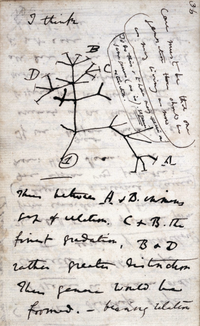
Photo from wikipedia
Abstract We received several commentaries both challenging and supporting our hypothesis. We thank the commentators for their thoughtful contributions, bringing together alternative hypotheses, complementary explanations, and appropriate corrections to our… Click to show full abstract
Abstract We received several commentaries both challenging and supporting our hypothesis. We thank the commentators for their thoughtful contributions, bringing together alternative hypotheses, complementary explanations, and appropriate corrections to our model. Here, we explain further our hypothesis, using more explicitly the framework of evolutionary social sciences. We first explain what we believe is the ultimate function of fiction in general (i.e., entertainment) and how this hypothesis differs from other evolutionary hypotheses put forward by several commentators. We then turn to the proximate features that make imaginary worlds entertaining and, therefore, culturally successful. We finally explore how these insights may explain the distribution of imaginary worlds across time, space, age, and social classes.
Journal Title: Behavioral and Brain Sciences
Year Published: 2022
Link to full text (if available)
Share on Social Media: Sign Up to like & get
recommendations!